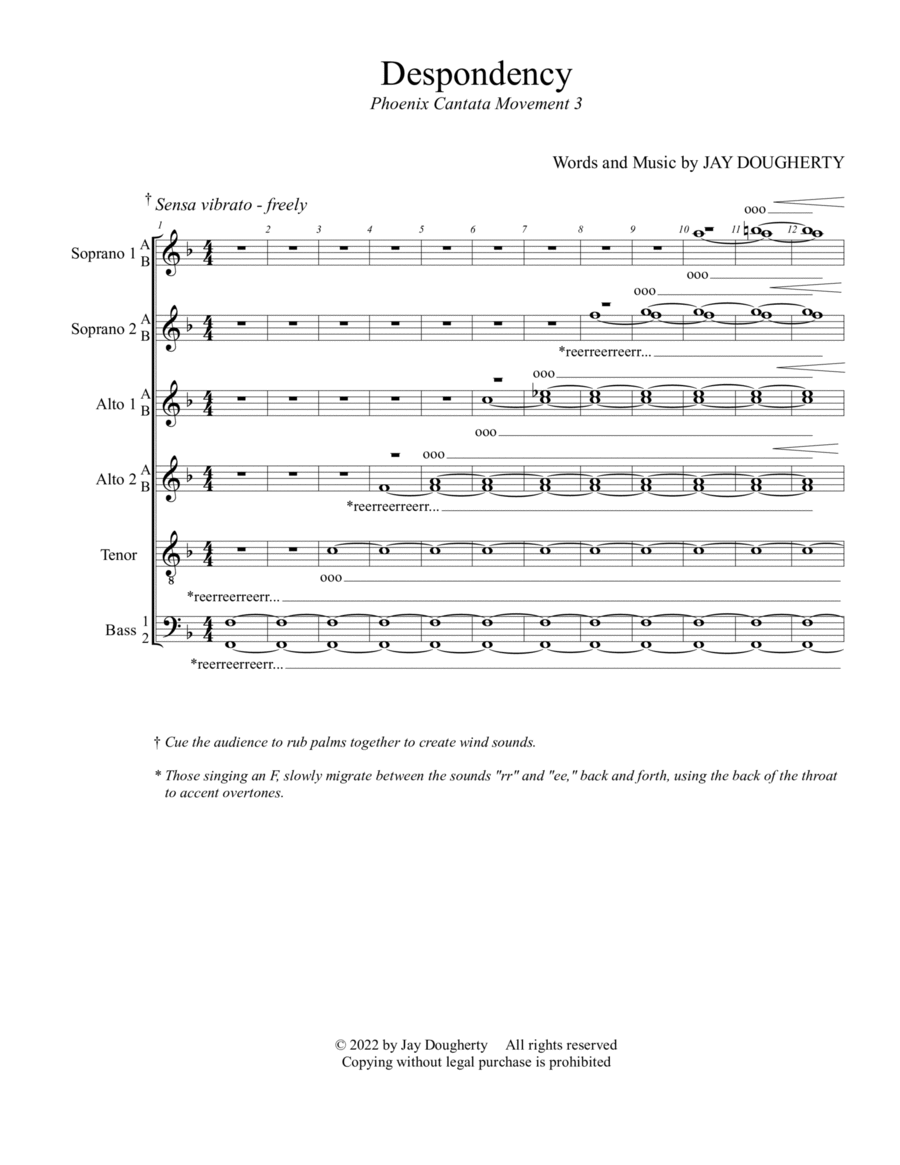Choral Choir,Choral (SATB divisi) - Level 3 - Digital Download SKU: A0.1394423 Composed by Jay Dougherty. 21st Century,A Cappella,Chamber,Contemporary,Contest,Festival. 4 pages. Jay Dougherty #977907. Published by Jay Dougherty (A0.1394423). Despondency by Jay Dougherty explores the depths of human emotion, expressing profound feelings of pain, anguish, and desolation. Through the utilization of the overtone series, “Despondency” portrays a haunting soundscape that gradually builds into a solemn tone cluster, evoking a sense of emptiness and sadness. The overtone series serves as the foundation upon which the composition unfolds, weaving together a tapestry of natural harmonies that resonate with an ethereal quality. Despite the simplicity of its text, consisting of only four sung words – Nothing. Aching. Empty. Broken. – these words reflect the raw and unfiltered experience of despair and sorrow. “Despondency” is movement 3 of Jay Dougherty’s Phoenix Cantata, which is a six-movement vocal and piano work that explores the themes of resilience and the transformative power of change. The music and lyrics are the creative work of Dr. Jay Dougherty, with a piano accompaniment by Justin La. Drawing inspiration from the mythical symbolism of the phoenix, this cantata narrates the journey through life's challenges and tribulations and explores how we can learn to comprehend, embrace, and grow from them. Although the Phoenix is not explicitly mentioned, the underlying message resonates with the tale of the phoenix: after facing adversity or transformation, we emerge stronger and more beautiful. Each of the 6 movements centers on a flower garden, the gardener's affection for the garden, the looming storm that could devastate it, and the gardener's eventual realization that, even after the storm, the garden remains beautiful and precious. Movement 3, Despondency, is performed a cappella and makes use of the overtone series and chord clusters to convey the gardener's torment and heartbreak as the garden has lost its innocence after a torrential storm. It is a heartbreaking lament that portrays the gardener's profound sorrow.About the ComposerDr. Jay Dougherty is the Performing Arts Department Chair and Director of Choral Activities at Drury University in Springfield, MO.For more information on compositions and arrangements by Jay Dougherty, visit: www.jmdougherty.comPlease purchase one copy for each performer.
